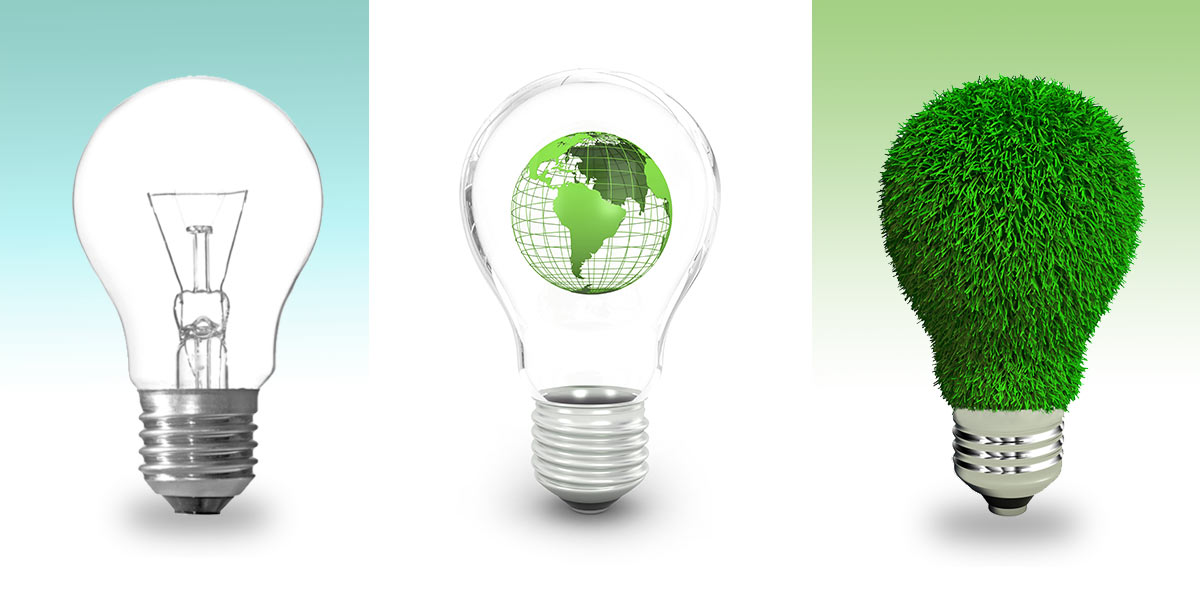
Using Digital Signage For Greener Communications
September 19, 2019 by guest author, sixteenninewpadmin
Guest Post: Derek DeWitt, Visix

Eco marketing, sustainable marketing, green marketing – whatever you call it, “being green” is something very much on people’s minds today, especially millennials and Gen Zers.
As such, it’s an important consideration for any communications strategy, regardless of whether its internal or public facing. This method of marketing means focusing on the environmental benefits that a product or service carries.
But what you say has to be true. Organizations that simply “greenwash” things find that it backfires, sometimes rather seriously, and can make an audience distrust them even more than before. Having said that, it isn’t that hard to think of something that is both true and sustainable about what you are promoting.
Yes, that new soap may be more powerful and get your whites really white, but green marketing highlights that it’s biodegradable and doesn’t choke the oxygen out of water systems it enters. The eco-friendly nature of something could come from the manufacturing process itself, the carbon footprint it leaves or requires to make and transport, that it makes zero water pollution, is recyclable, is made of recycled or renewable materials, has eco-friendly packaging, uses no or little plastic – there are lots of possibilities.
What you communicate is important, but so is how you communicate it. It doesn’t make sense to talk about how eco-minded you are on 2,000 printed flyers or even 20 printed posters. If you’re looking for a greener solution, consider digital signage. Although it does use hardware and electricity, the savings in materials, waste and money compared to print are extensive.
Stop Printing
The first, most obvious thing to look at is that you’re not using paper for communications like these – no more flyers, handouts, posters, etc. all over the walls and bulletin boards scattered around the facility. And that’s not nothing. The average US office worker uses 10,000 sheets of paper a year, so 20 office workers use a literal ton of paper a year (a ton is around 200,000 A4 sheets). One ton of paper is made up of 17 trees, and uses almost 7,000 gallons of water, 380 gallons of oil and 4000 kilowatts or energy to produce. Those 17 trees, left living, would have absorbed 250 pounds of carbon dioxide every year.
And if the paper goes into a landfill, there are more negative environmental effects – the paper releases methane and other gases as it breaks down, inks leech into the soil and groundwater.
So, multiply these numbers by every 20 employees, and you can start to see the impact of paper usage in your organization.
Digital signs also save a company money by reducing printing costs. The average US office worker costs the company around $600 a year in printing costs. And you have to factor in the paid time it takes someone to go around and replace old notices and posters, and dispose of them, whenever there’s something new to communicate.
Then there’s the scope and versatility of digital signage. In a single day, on a single playlist, you can feature a vast number of messages and media that would be extremely difficult if not downright impossible using a paper-based system. (Keep in mind to use dayparting and other best practices, so you don’t overcrowd your playlists.)
Save CO2
Digital signs use no paper – zero. They do use electricity, but there are ways to reduce the energy load and its associated costs for your visual communications. Devices like screens, PCs and players become more energy efficient with each new model or generation – our devices today use a mere 10% of what similar devices used 20 years ago.
There’s a great website called the Energy Use Calculator, where you can figure out how much power a display uses. Let’s look at a screen that uses 40 watts, being used for 12 hours a day. The average cost per kilowatt hour is around 12 cents, so that display uses $1.75 of electricity a month, or $21.03 a year, consuming 175.2 kilowatt hours each year. Looking at just the costs to the organization, one display per year costs the same as around four reams of paper (or 2,000 sheets of A4), which is one-fifth of what one worker will use in a year.
Also, almost all displays now have some form of device control, which allows you to either turn them off or put them in low-energy mode (like sleep mode on your laptop) when not being used. Using device control reduces CO2 emissions by 1,687 pounds a year per device. So, a deployment of 25 digital signs using device control would save over 42,000 pounds of CO2. And obviously, displays not left on all the time will last longer, not needing to be replaced as often. Making sure they’re mounted in areas with good airflow, so they don’t need to use their fans all the time to cool down, is another way to reduce power usage.
Lastly, many modern displays use cradle-to-cradle components, which are parts that can be removed and used someplace else “as is”, instead of needing to be melted down to be reused. Some vendors offer hardware trade-in programs, which can save serious money and hassle for your organization, as well as ensure that old hardware is being recycled responsibly and not just tossed into a landfill.
Encourage Good Habits
So, a digital signage system is a more sustainable alternative compared to printed communications. But it can help in other ways, too. What you put on screens can not only trumpet existing green initiatives within the organization, it can actually help create a culture of awareness and responsibility.
One way is to simply mention what eco-friendly things you’re already doing. Got a recycling program? Show helpful messages about what can and cannot be recycled. Promote community parks and green volunteer opportunities. Advertise how much paper you’ve saved over a week or how much CO2 you’ve prevented from going into the atmosphere this month. Use an energy dashboard to show things like realtime energy or water usage, with a goal and progress to that goal always in full view. Gamified campaigns could encourage departments to compete against one another to see who can use the least in a week, and the winners get a cool prize of some sort.
If your building goes smart sometime in the future, educate your audience about what that entails. If you contribute to clean-up initiatives, or tree planting campaigns or something similar, use an interactive touchscreen to not only advertise what you’re doing, but also send them to websites, surveys and sign-up sheets to let them know how they can help out.
Bottom-Line
Organizations use digital signs to inform, educate, entertain, and alert viewers – and all of these goals can apply to your green communications. But another of the most powerful reasons to use digital signage is to encourage and manage behavior change. If you want to affect your organization’s culture and habits, people need to know where they stand and what the goal is. It doesn’t matter if your c-suite believes in global warming or not – most of your audience does, and the more you foster a culture of eco-responsibility, the more engaged they will be.



Leave a comment